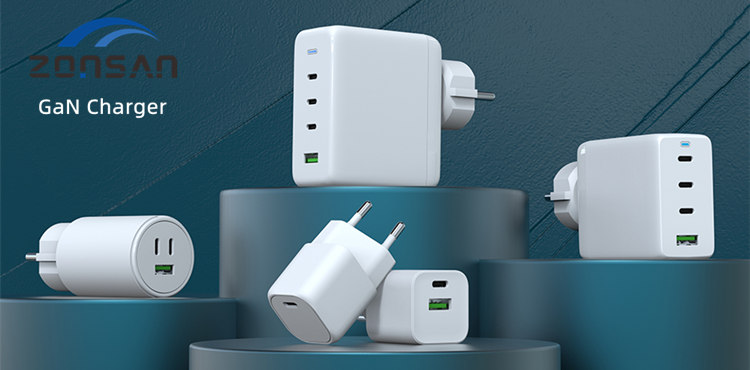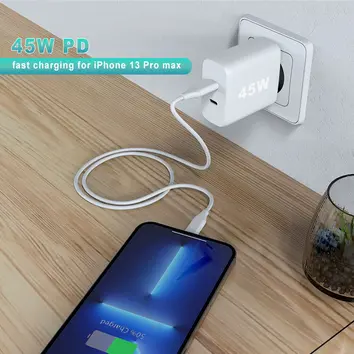Is The Day of The Great Unification of Chargers Still Far Away?
Is the global unification of charging interface feasible? Does the unification of charging interfaces mean that we can use one charging head and one charging cable to solve the problem of fast charging of all mobile smart devices? How far do we have to go to achieve this goal?
Small interfaces set off a "storm" in the accessories market
In October 2022, the European Council approved the bill "Uniform Charging Interface in the European Union", which stipulates that from 2024 onwards, cell phones, tablets, digital cameras and other electronic devices sold within the EU must use the USB-C interface.
According to this new EU regulation, the Apple Lightning interface will no longer be applicable to the EU electronic devices market. iPhone15 interface changes mean that Apple cell phones will be further transformed to universal. But do not rule out the possible release of the iPhone 15 series this fall to launch "EU special edition" products, or by accelerating the wireless charging to avoid the interface restrictions.
The unified charging interface for USB-C will reduce thousands of tons of electronic waste each year, and can also promote the reuse of chargers.
Apple Lightning interface compared to the USB-C interface, there are slow transmission rate, fast charging speed is not as fast as it should be, poor device compatibility and other outstanding issues. And since its launch in 2015, USB-C has become the interface of choice for mainstream cell phones, consumer electronics, personal computers and other manufacturers worldwide, with the advantages of small size, positive and negative insertion, fast transmission, strong signal capacity, and good compatibility.
Specifically, although the Apple Lightning interface supports forward and reverse insertion, but only eight pins work, and can withstand a maximum current of only 3 amps (A), the charging power limit of 33 watts (W). And the current market is popular gallium nitride charger, charging power to 40-120W.
Mobile device charging interface is not uniform, first of all, it brings trouble and inconvenience to consumers' use. Secondly, because the Apple Lightning interface data cable standard is not public, enterprises can only produce under the authorization of Apple, the autonomy of production enterprises is low, and product transparency is low.
If the Apple phone to USB-C interface, the original Lightning interface MFI system will also be invalid?
"The unification of smart device charging interfaces is technically perfectly feasible." The industry generally believes that the MFI certification of Apple's cell phone data cable brings it lucrative profits every year, and if charging products can all be common, it will certainly affect Apple's accessory sales.
According to estimates, Apple relies on the "unique" Lightning charging cable and MFI certification can earn billions of dollars each year.
Apple will probably combine the MFI chip and USB-C together, to do USB-C certification chip. If the phone wants to achieve full-speed charging state, you still need to buy the original or get authorized third-party charging accessories.
Private agreements make it difficult to unify the charger
It is reported that even if the charging interface is unified, the difference in fast charging protocols makes it difficult to achieve fast charging for all electronic devices with one charging head and one charging cable.
Xiaomi 13Pro's fast charging protocol shows a charging power of 120W, which takes only 19 minutes to fill. When using this phone's charger to charge other brands such as Vivo and OPPO, then it takes at least 1 hour to be fully charged.
The same USB-C charging interface, the companies fast charging technology is not interoperable, incompatible problems, such as OPPO cell phone fast charging power of 100W, while Xiaomi cell phones with this set of chargers may only reach 10W slow charging power. The reason for this is that in recent years, various brands have blossomed, forming a variety of fast charging standards and protocols.
For example, Huawei uses SC/FCP fast charging technology, where the FCP protocol uses a "high-voltage type small current" scheme, and the SCP protocol uses a "low-voltage high current" scheme. Vivo uses FlashCharge technology to achieve shorter charging time through higher charging power.
Since each charger and charging cable is independently developed, from charging technology to components are different, so major cell phone brands have launched their own private protocols, which eventually lead to charging protocols incompatible with each other. When using other brands of chargers, are only low power charging, seriously affecting the user's fast charging experience, while increasing the risk and cost of research and development up and down the industry chain.
In general, c charging jie'k interface and fast charging protocol unification is still difficult c heavy. But from a long-term perspective, unification is still the main theme.

OEM Phone Charger Recommendation
The Advantage of ZONSAN's charger product:
1. overcurrent protection
2. input overvoltage protection
3. outut overvoltage protection
4. short circuit protection
5. overcharging protection
6. temperature protection
The Advantage of ZONSAN's charger product:
1. overcurrent protection
2. input overvoltage protection
3. outut overvoltage protection
4. short circuit protection
5. overcharging protection
6. temperature protection

Read More

Read More

Read More